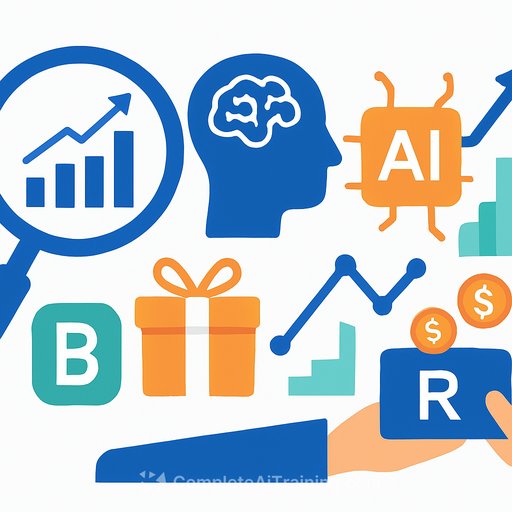Google Finance Adds Deep Search, Richer Charts, and Prediction-Market Data: What It Means for Finance Teams
Google is folding its Gemini models into Google Finance, turning simple lookups into research workflows. The update brings AI-generated answers with citations, expanded charting, and market probabilities from prediction platforms. If your team lives in spreadsheets and dashboards, this is worth a quick pilot.
Deep Search: From Query to Research Plan
Type an open-ended financial question and get an AI-generated response with source links and a clear "research plan" that shows how the answer was formed. You can open each reference, refine the query, and iterate like you would with an analyst. It's testing in Google Labs now and will roll out to AI Pro and AI Ultra subscribers. The first launch includes India, with English and Hindi support.
- Use cases: policy impact briefs, sector drivers, competitive snapshots, KPI definitions, and event prep.
- Sample prompts: "What explains the multiple spread between large-cap semis and fabless peers over the last 12 months?" or "Summarize tail risks for US regional banks going into Q4 earnings with sources."
AI summaries help, but they don't replace manual checks of filings, data tables, and structured disclosures. Reasoning models can still miss context in figures, charts, and notes. Keep a verification step: cross-check against primary sources like SEC EDGAR.
Charts That Actually Speed Analysis
The redesigned interface adds technical indicators, historical overlays, and sector-level comparisons in one view. That trims tab-switching and lets you sanity-check patterns faster. For PMs, it supports quick hypothesis testing; for FP&A and corp dev, it reduces the time to build a first pass on comps and factors.
- Practical moves: save a sector comparison template, pre-load your watchlist, and log the indicator sets you trust for each asset class.
- Pair with Deep Search to turn a chart anomaly into a source-backed explanation in minutes.
Prediction Markets: Signal With Caveats
Google Finance now surfaces market-based probabilities from Kalshi and Polymarket for outcomes like inflation, GDP growth, and rate decisions. You can see how expectations shift over time and where they diverge from street consensus. Helpful for scenario weights and messaging around macro sensitivity.
- Limits: smaller participation and pockets of concentrated flow can skew prices. During uncertainty, these markets can overstate volatility.
- How to use: set thresholds (e.g., ignore signals under a liquidity cutoff), compare with surveys/derivatives-implied probabilities, and look for persistent divergences before reacting.
AI in Finance Workflows: Augment, Don't Replace
Across the industry, teams are adopting explainable, auditable AI that slots into existing processes. Banks and asset managers are using reasoning models to speed forecasting, reconciliation, research summaries, and earnings prep-while keeping human oversight. Examples include internal assistants at Morgan Stanley and JPMorgan, AI summaries on Bloomberg's terminal, and sector-focused offerings like Claude for financial services and enterprise research tools from Perplexity.
The throughline: private data, compliance controls, and documented output. Treat Google Finance's new features the same way-use them to compress research time, then verify.
Quick Start Playbook for Your Team
- Access: Enable Google Labs for early testing or confirm AI Pro/Ultra access when available. If you're eligible, watch for rollouts noted in Google Labs.
- Scope: Pick 2-3 clear tasks (earnings prep, macro brief, comp set scan) and define what "good" looks like.
- Prompts and templates: Standardize a prompt library and a one-page "research plan" template that includes sources, assumptions, and conflicts.
- Verification: Require cross-checks against filings and structured datasets; flag any numeric claims for manual review.
- Prediction markets policy: Set a liquidity floor, require confirmation from a second signal (e.g., options-implied probabilities), and log divergences before decisions.
- Controls: Document data lineage, keep audit trails, and route summaries through compliance for external use.
What to Watch Next
- Expansion of Deep Search coverage and languages beyond the initial rollout.
- More data sources inside Google Finance (macro, credit, alternative data) and tighter workflow hooks.
- Clearer guidance on how AI outputs are generated, ranked, and cited-useful for compliance and model risk teams.
Bottom Line
Deep Search turns Google Finance into a research assistant with citations; the new charts cut context switching; prediction markets add a fast read on consensus and dissent. Use them to move quicker, then verify before anything hits a model, memo, or the desk.
If you're formalizing AI use in finance, here's a curated set of tools to accelerate credible workflows: AI tools for Finance.
Your membership also unlocks:






